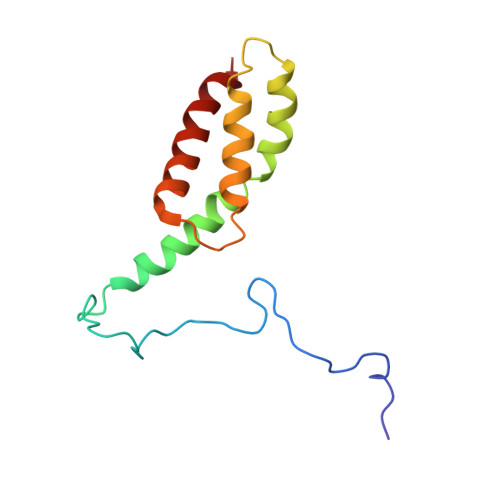The mechanism of YAP/TAZ transactivation and dual targeting for cancer therapy.
Yu, M., Wang, J., Zhang, X., Zhang, H., Li, C., Li, J., Lin, J., Zheng, J., Huang, L., Li, Y., Sun, S.(2025) Nat Commun 16: 3855-3855
- PubMed: 40274828
- DOI: https://doi.org/10.1038/s41467-025-59309-w
- Primary Citation of Related Structures:
8J9A, 8WRG - PubMed Abstract:
Transcriptional coactivators Yes-associated protein (YAP) and transcriptional coactivator with PDZ-binding motif (TAZ) play key roles in cancers through transcriptional outputs. However, their transactivation mechanisms remain unclear, and effective targeting strategies are lacking. Here, we show that YAP/TAZ possess a hydrophobic transactivation domain (TAD). TAD knockout prevents tumor establishment due to growth defects and enhances immune attack. Mechanistically, TADs facilitate preinitiation complex (PIC) assembly by recruiting the TATA-binding protein-associated factor 4 (TAF4)-dependent TFIID complex and enhance RNA polymerase II (Pol II) elongation through mediator complex subunit 15 (MED15)-dependent mediator recruitment for the expressions of oncogenic/immune-suppressive programs. The synthesized peptide TJ-M11 selectively disrupts TAD interactions with MED15 and TAF4, suppressing tumor growth and sensitizing tumors to immunotherapy. Our findings demonstrate that YAP/TAZ TADs exhibit dual functions in PIC assembly and Pol II elongation via hydrophobic interactions, which represent actionable targets for cancer therapy and combination immunotherapy.
- Department of Human Anatomy, Histology and Embryology, School of Basic Medicine, Tongji Medical College and State Key Laboratory for Diagnosis and Treatment of Severe Zoonotic Infectious Diseases, Huazhong University of Science and Technology, Wuhan, China.
Organizational Affiliation:
















